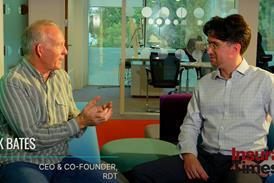Fraser Young and Rhys Taylor explain the importance of linking strategic planning with budget information
Change is today's watchword for commercial insurance. Increasing competitive pressure on premium prices are eroding traditional profitability, forcing major cost reductions across the business.
This is a shock to the system of the traditional operating models of insurance organisations. In response, companies need to quickly re-evaluate current routes to market and have to redesign internal processes to achieve greater efficiency.
The industry is generally ill equipped to provide its executives with the information required to restore profitability. Information often lacks timeliness, accuracy and integrity. Its gathering also poses a huge administrative burden. So what can we do to alleviate this problem and ensure we have the performance management information required to embrace inevitable change?
Insurance companies will have to take fundamental strategic decisions in the near future in order to restore and maintain the levels of returns that shareholders expect.
Companies urgently need to improve long-range financial planning, to get to grips with operational planning and budgeting, and to understand cost and profitability through better analysis.
There is an immediate requirement for better management information to support the decision-making process.
Improving long-range financial planning is invariably about replacing the many complex spreadsheets, usually creaking under the weight of financial data that most companies maintain to support long-term financial planning. Although easy to use, spreadsheets have significant limitations when used for strategic planning and evaluating the future.
In today's changing market, strategic planning models need frequent modification and evaluation. However, the routine updating of assumptions about the external and internal drivers of profitability is not always easy.
Many of these critical pieces of information, such as renewal rates and unit costs, invariably sit across a number of separate systems. Stand-alone spreadsheets simply cannot cope with today's more pressing need for long term planning.
Getting to grips with operational planning and budgeting is another major challenge. In most cases, budgeting is limited to the basic collection and consolidation of expenses, with limited integration between budgets and operational plans.
This limits the variance analysis of budget against actual expenditure that companies require to understand the known cause and effect between demand, use of resources and expenses.
The result is that budgets are infrequently reforecast, become highly inaccurate, and in turn distort the view of future performance.
Understanding cost and profitability seems like a basic requirement for any business, but many insurers are not able to report on class of business and channel profitability with the frequency they desire. This is partly because much of the information required for this reporting resides away from the core financial systems.
It is time consuming to collate the data from these other sources. Insurance companies typically control class of business and channel profitability data in disparate IT systems, and consolidation involves complicated data transfer and quickly results in multiple versions of the truth.
Not only does this information need to improve, but so also does its integration, otherwise no single aspect of performance management is fully utilised.
The starting point for a solution to this problem is the ability to understand what drives costs inside the organisation and how best to model this in order to provide insight into performance.
With this as a foundation, insurance companies should look to establish a single system for strategic planning, budgeting and forecasting, and activity-based costing.
The single system Chaucer Syndicates is introducing at is ALG Software's Predictive Planning, which will allow us to develop linked models that cover different parts of the organisation, but which easily consolidate for enterprise-wide reporting.
The other key aspect of the solution is not the system itself but the approach to implementation. Despite striving for one integrated solution, attempting to achieve all three requirements simultaneously is difficult. The best approach is to start with what you already have and build outwards in logical stages (see box).
We want to provide our finance, management information, actuarial and accounts departments with a regular flow of intelligent and accurate forecasting information. ALG Software's Predictive Planning application is being used to integrate both financial and non-financial data to provide a more in-depth analysis of the organisation and to support better management of future growth.
Previously our teams relied on spreadsheets to provide this information, which was time consuming and created a higher risk of error since many different sources of information needed consolidation.
We are also able to measure our performance against key performance indicators to support the continued progress of the organisation and can calculate 'what-if?' scenarios to assess the impact of internal and external changes to the business on our financial results. IT
' Fraser Young is a project manager and Rhys Taylor is an MI manager at Chaucer Syndicates
An approach to integrating planning and budgeting
to increase market share while reducing unit costs to outperform their competitors.





































